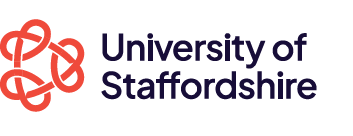Module Descriptors

DIGITAL FORENSIC FUNDAMENTALS
COCS70704
Key Facts
Digital, Technology, Innovation and Business
Level 7
15 credits
Contact
Leader: Ange Aly
Email: ange.aly@staffs.ac.uk
Hours of Study
Scheduled Learning and Teaching Activities: 39
Independent Study Hours: 111
Total Learning Hours: 150
Pattern of Delivery
- Occurrence D, Asia Pacific Institute of Information Technology Sri Lanka (Colombo), PG Semester 1 to PG Semester 2
Sites
- Asia Pacific Institute of Information Technology Sri Lanka (Colombo)
Assessment
- Coursework - Individual project report (3000 words) weighted at 100%
Module Details
Module Special Admissions Requirements
None.
Module Learning Strategies
Teaching material will be presented through a combination of lectures, tutorials, practical exercises, and directed self-study (as a substitute for some tutorials/lectures).
Teaching delivery will consist of 12 hours of lectures and 24 hours practical/tutorial sessions.
Teaching delivery will consist of 12 hours of lectures and 24 hours practical/tutorial sessions.
Module Indicative Content
This module covers the main aspects and concepts of digital devices and the significance of implementing forensic techniques to collect digital artefacts from individual and networked computer systems.
In particular it will address :
- Computer systems components, architecture, and infrastructure
- Storage devices, networked devices, the Internet, applications, registry and social media
- Media and storage
- File storage systems, media such as hard disks, network storage, Zip and floppy formats etc. - Files - deleted files, hidden files, monitoring processes, and encryption issues
In particular it will address :
- Computer systems components, architecture, and infrastructure
- Storage devices, networked devices, the Internet, applications, registry and social media
- Media and storage
- File storage systems, media such as hard disks, network storage, Zip and floppy formats etc. - Files - deleted files, hidden files, monitoring processes, and encryption issues
Module Learning Outcomes
1. DISCUSS CRITICALLY FUNDAMENTAL FORENSIC COMPUTING CONCEPTS AND COMPONENTS IN RELATION TO A TYPICAL COMPUTER SYSTEM.
Reflection
2. CRITICALLY DOCUMENT THE LOCATIONS OF FORENSICALLY SIGNIFICANT DATA AND THE MEANS TO RECOVER THIS INFORMATION USING A VARIETY ADVANCED INDUSTRIAL STANDARD TECHNIQUES. Knowledge & Understanding
3. EVALUATE THE IMPLEMENTATION OF ACPO GUIDELINES TO COLLECT AND PRESENT DIGITAL EVIDENCE. Problem Solving
4. PRESENT THROUGH SELF EVALUATION AND INTERPETATION THE LOCATION OF DIGITAL EVIDENCE WITHIN A DIGITAL DEVICE AND THE STEPS OF EVIDENCE PRESERVATION USING ADVANCED PROFESSIONAL PRACTICE THROUGH PRACTICAL INVESTIGATION AND ARTEFACT DEVELOPMENT. Communication
Reflection
2. CRITICALLY DOCUMENT THE LOCATIONS OF FORENSICALLY SIGNIFICANT DATA AND THE MEANS TO RECOVER THIS INFORMATION USING A VARIETY ADVANCED INDUSTRIAL STANDARD TECHNIQUES. Knowledge & Understanding
3. EVALUATE THE IMPLEMENTATION OF ACPO GUIDELINES TO COLLECT AND PRESENT DIGITAL EVIDENCE. Problem Solving
4. PRESENT THROUGH SELF EVALUATION AND INTERPETATION THE LOCATION OF DIGITAL EVIDENCE WITHIN A DIGITAL DEVICE AND THE STEPS OF EVIDENCE PRESERVATION USING ADVANCED PROFESSIONAL PRACTICE THROUGH PRACTICAL INVESTIGATION AND ARTEFACT DEVELOPMENT. Communication
Module Learning Strategy
Teaching material will be presented through a combination of lectures, tutorials, practical exercises, and directed self-study (as a substitute for some tutorials/lectures).
Teaching delivery will consist of 13 hours of lectures and 26 hours practical/tutorial sessions.
Teaching delivery will consist of 13 hours of lectures and 26 hours practical/tutorial sessions.
Module Resources
Access to a Digital Forensics Lab
Computer cases showing internal components
Digital Forensics Software (e.g. EnCase, FTK, and Open Source Tools)
Computer cases showing internal components
Digital Forensics Software (e.g. EnCase, FTK, and Open Source Tools)
Moduile Texts
Bazzell, M. (2018) Open Source Intelligence Techniques: Resources for Searching and Analysing Online Information, CreatSpace Publishers, ISBN: 1984201573.
Diognes, Y, and Ozkaya, E. (2018) Cybersecurity - Attack and Defense Strategies: Infrastructure security with Red Team and Blue Team tactics, PACKT Publishing, ISBN: 1788475291.
Nelson, B. and Steuart, C. (2015) Guide to Computer Forensics and Investigations, 5th Edition, Course Technology Publishers, ISBN: 1285060032.
ISO 8000-8:2015 Data quality -- Part 8: Information and data quality: Concepts and measuring
Johansen, G. (2017) Digital Forensics and Incident Response, Packt Publishing, ISBN13: 978-1787288683
Nikkel, B. (2016) Practical Forensic Imaging: Securing Digital Evidence with Linux Tools, No Starch Press. ISBN-13: 978-1-59327-793-2
Bunting, S. (2012) EnCase Computer Forensics - Official EnCE: EnCase Certified Examiner Study Guide, Sybex, ISBN: 0470901063
Diognes, Y, and Ozkaya, E. (2018) Cybersecurity - Attack and Defense Strategies: Infrastructure security with Red Team and Blue Team tactics, PACKT Publishing, ISBN: 1788475291.
Nelson, B. and Steuart, C. (2015) Guide to Computer Forensics and Investigations, 5th Edition, Course Technology Publishers, ISBN: 1285060032.
ISO 8000-8:2015 Data quality -- Part 8: Information and data quality: Concepts and measuring
Johansen, G. (2017) Digital Forensics and Incident Response, Packt Publishing, ISBN13: 978-1787288683
Nikkel, B. (2016) Practical Forensic Imaging: Securing Digital Evidence with Linux Tools, No Starch Press. ISBN-13: 978-1-59327-793-2
Bunting, S. (2012) EnCase Computer Forensics - Official EnCE: EnCase Certified Examiner Study Guide, Sybex, ISBN: 0470901063
Module Additonal Assessment Details
A project report of 3,000 words weighted at 100%. (Learning Outcomes 1-4).
A practical portfolio documented within a 3000 word report (excluding appendices). The portfolio will consist of a research based case study and small artefact development to show the application of associated practical skills (Learning Outcomes 1 to 4).
A practical portfolio documented within a 3000 word report (excluding appendices). The portfolio will consist of a research based case study and small artefact development to show the application of associated practical skills (Learning Outcomes 1 to 4).
Web Descriptor
This module covers the main aspects of digital forensics, tools and methodologies in computing system investigations and provides an understanding of device operations, the location of digital artefacts, and how to safely preserve and acquire digital evidence.